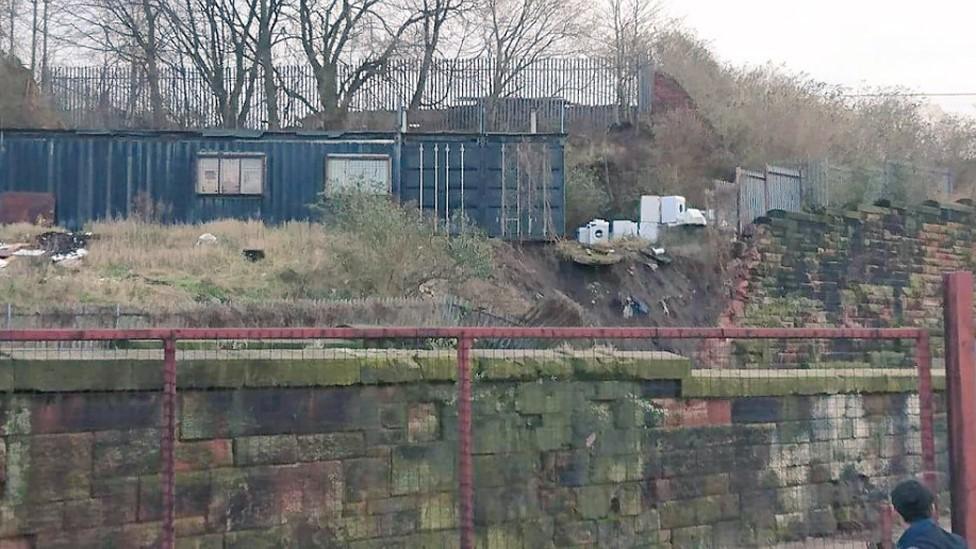Liverpool Lime Street collapse 'could have crushed train'
- Published
Video of a 3D model created from aerial images shows the site of the collapse
A train could have been crushed with "disastrous consequences" when a wall collapsed near Liverpool's main station, inspectors have concluded.
About 170 tonnes of rubble fell across the tracks into Lime Street terminus on 28 February.
Network Rail has been criticised, with an investigation concluding , externalthere had been signs of a dangerous situation "for a long time".
Network Rail said it would "carefully consider" the report.
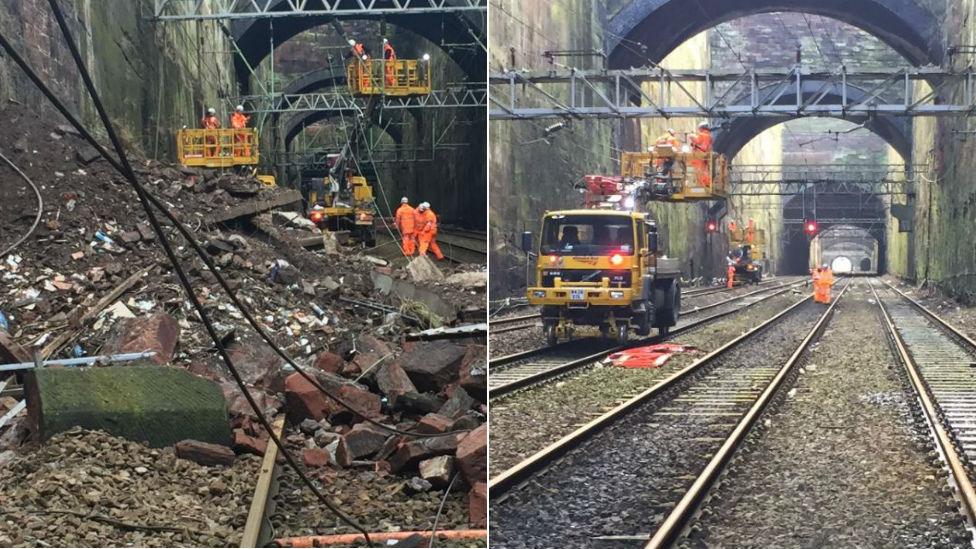
About 170 tonnes of rubble fell on to the approach to Liverpool Lime Street
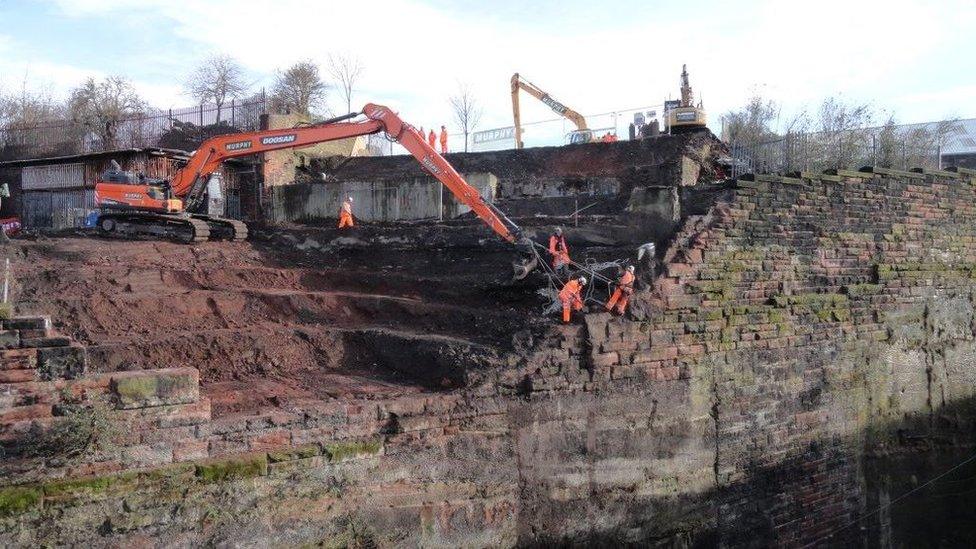
Rubble from the wall blocked all tracks to the station
The falling debris brought down overhead wires and blocked all four tracks. The station was closed for a week for repairs.
The Rail Accident Investigation Branch (RAIB) found development on land near the approach had infringed Network Rail property and led to soil building up behind the top of the wall.
The increase in ground level caused the wall to be "subjected to higher loading", but heavy rainfall may also have contributed to the collapse investigators said.
Louise Ellman, Labour MP for Liverpool Riverside, called on Network Rail to overhaul its safety procedures to prevent a possible tragedy.
She told the BBC: "It's a miracle that this wasn't catastrophic and there wasn't a massive loss of life
"Network Rail clearly failed in its duty. It's inexcusable that a driver did alert them to the problem but nothing was done.
"I'm very concerned that there are other places that this could happen again."
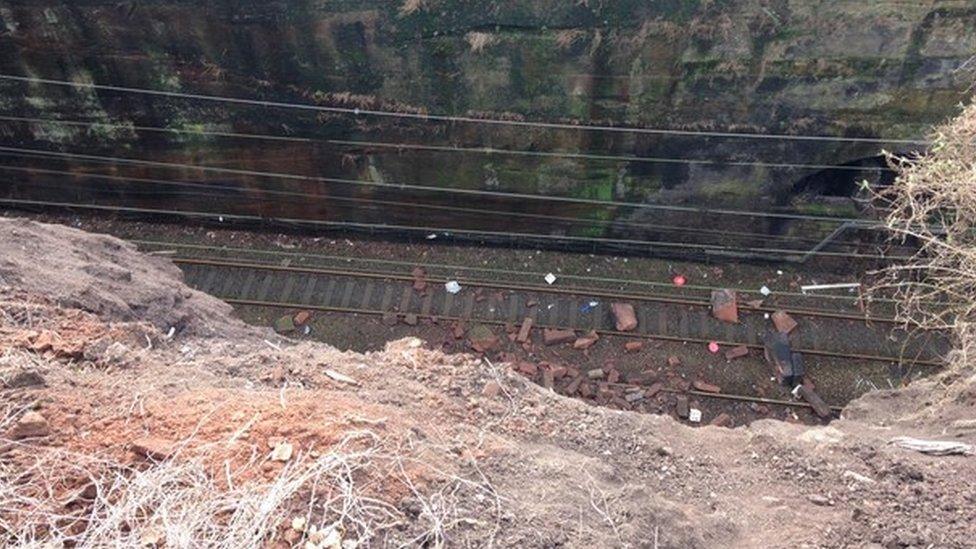
The station was closed for a week for repairs
Investigators found:
Information recorded during Network Rail's routine examinations was insufficient to detect the developments on adjacent land and property infringement
Network Rail did not have a suitable risk prioritisation process for walls posing a serious threat to safety "in the event of a failure"
Simon French, chief inspector of rail accidents, said: "It had the potential to crush or derail a passing train, with disastrous consequences.
"However, the signs that a dangerous situation was developing had been there for a long time."
He said it was "vital" that Network Rail carried out regular checks, adding: "I hope that this investigation will result in a significant change to the way that the railway manages risk from its neighbours."
Priti Patel, head of safety for Network Rail's London Northern Western business, said: "Safety is our top priority. The RAIB recommends improvements which we will carefully consider."
- Published30 November 2017
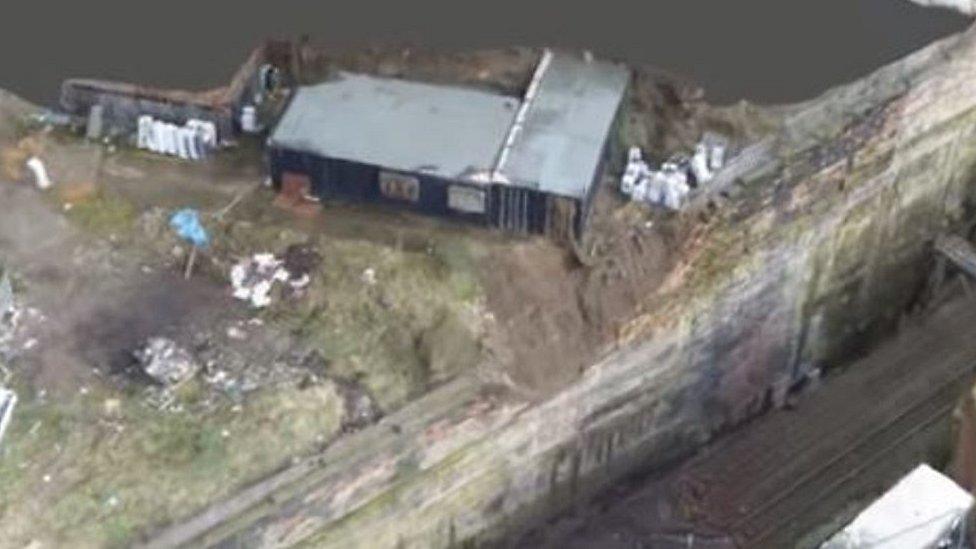
- Published7 March 2017
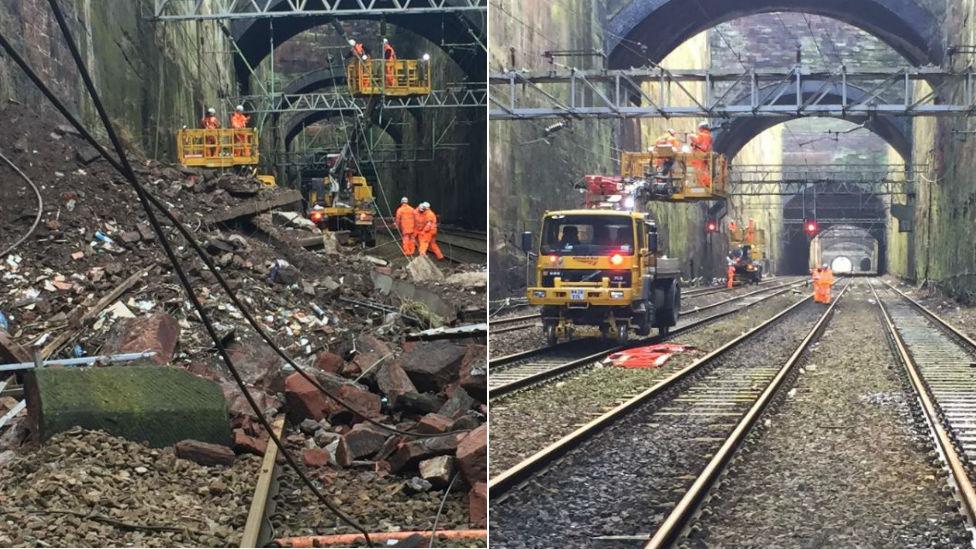
- Published3 March 2017
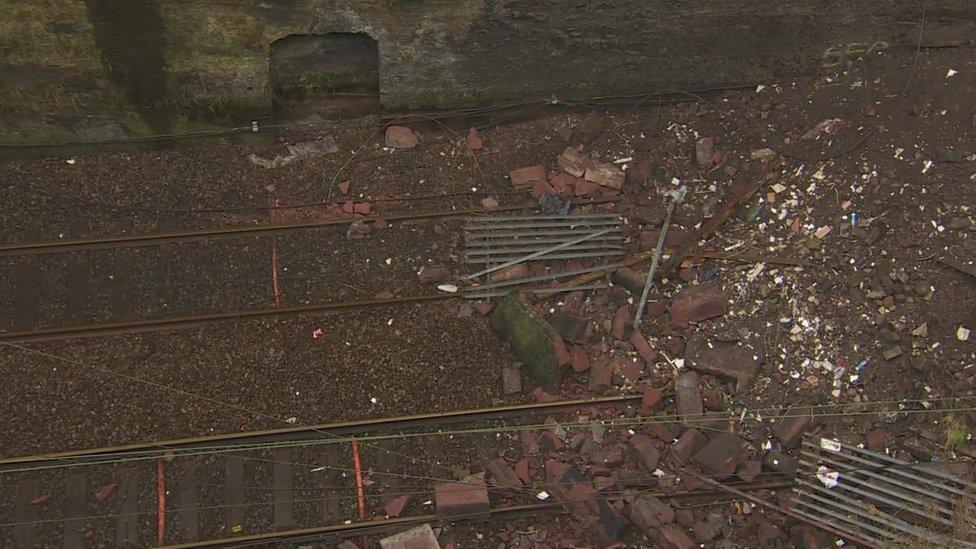
- Published3 March 2017

- Published2 March 2017

- Published1 March 2017
